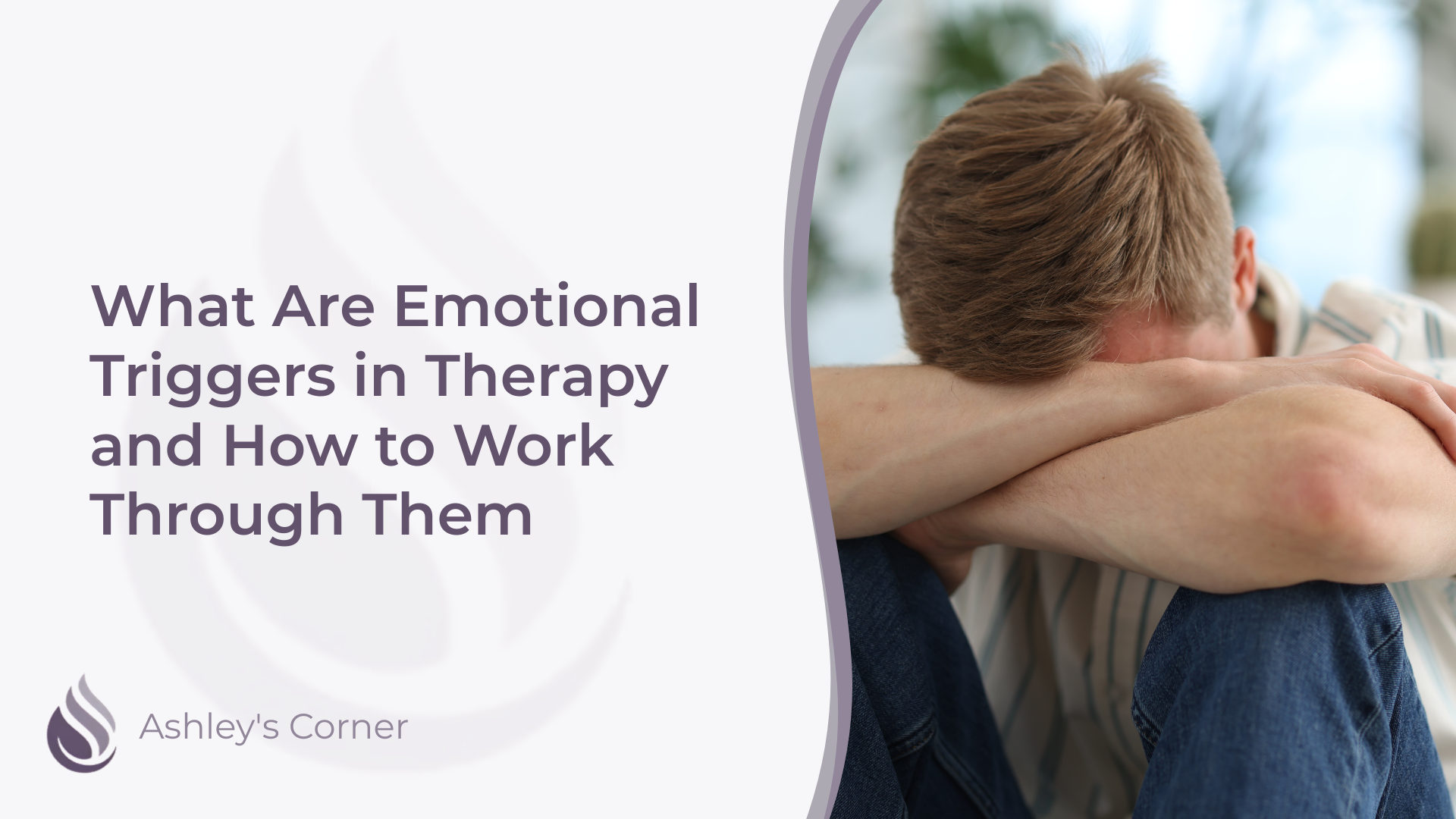
10 Nov What Are Emotional Triggers in Therapy and How to Work Through Them
If you’ve ever felt an unexpected wave of emotion during a therapy session—whether sadness, anger, anxiety, or shame—you may have experienced a trigger. Understanding what are emotional triggers in therapy can help you make sense of these reactions and use them as a powerful tool for healing rather than something to avoid.
Defining Emotional Triggers in a Therapeutic Setting
In therapy, an emotional trigger is an event, word, memory, or interaction that stirs up a strong emotional response, often linked to past experiences. These responses can be physical (tightness in the chest, rapid heartbeat), emotional (sudden sadness, anger, or fear), or cognitive (negative self-talk, intrusive thoughts).
When exploring what are emotional triggers in therapy, it’s important to recognize that triggers are not signs of failure—they’re signs that you’ve touched on something meaningful that’s ready to be explored.
Why Emotional Triggers Happen in Therapy
Therapy is designed to be a safe space where hidden or suppressed emotions can surface. Triggers often arise when:
- A therapist asks a question that connects to past trauma or pain
- A topic challenges long-held beliefs or self-perceptions
- Relationship patterns with the therapist mirror those from earlier in life
- A memory or story being discussed brings back unresolved feelings
How Triggers Can Support Healing
While emotional triggers can feel overwhelming, they can also open the door to deeper understanding and change. By working through them, you can:
- Gain insight into the root cause of your reactions
- Learn emotional regulation skills
- Heal unresolved trauma or grief
- Break old patterns in relationships and self-talk
Knowing what are emotional triggers in therapy helps shift your perspective from seeing them as setbacks to recognizing them as opportunities for growth.
Managing Emotional Triggers in Therapy
If you notice yourself becoming triggered in a session:
- Pause and Name It – Acknowledge the feeling and its intensity.
- Breathe and Ground Yourself – Use grounding exercises to calm your body.
- Communicate With Your Therapist – Share what’s happening so you can explore it together.
- Practice Self-Compassion – Remember that being triggered is a natural part of healing.
Working With a Supportive Therapist
A skilled therapist will guide you through triggers without judgment, helping you process emotions safely. This partnership can turn triggering moments into breakthroughs for emotional awareness and resilience.
Turn Triggers Into Healing Opportunities
Understanding what are emotional triggers in therapy is the first step toward using them as catalysts for change. With the right guidance, these moments can help you uncover hidden wounds, strengthen emotional skills, and move toward lasting healing.
Still Waters Team creates a safe, compassionate space for clients to explore triggers, understand their origins, and transform their emotional responses. If you’re ready to face your triggers and turn them into tools for growth, book your session today.




No Comments